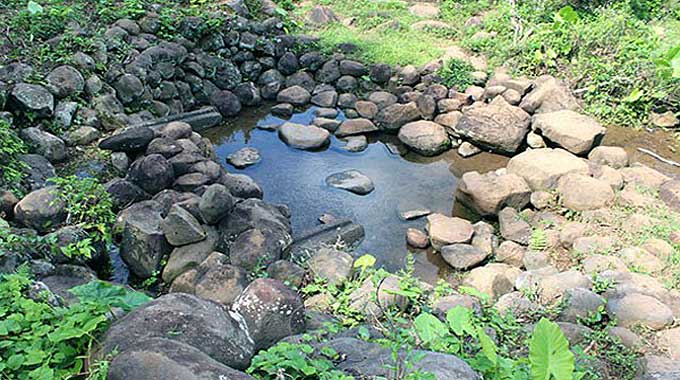Quang Tri provincial authorities have worked to preserve historic wells existing thousands of years old.

Unlike a normal well created by digging, boring or drilling to access underground water, these wells were created by putting stones together on the hillside to store underground water and then let it flow as needed.
The system, including 30 wells, was recognised as a national heritage item in 2001. Locals consider them a cultural legacy, and they have contributed to conservation measures by bringing rocks to the site. The wells are said to be manmade works constructed from rocks arranged in a structural fashion.
According to Nguyen Quang Chuc, the centre's director, the wells were damaged by American bombs during the war. Chuc said the centre is planning opportunities for tourism once the wells are restored.
The centre said it does not know the exact age of the 14 stone wells, but the structures have stood in the Gio An Commune of Gio Linh District in Quang Tri Province for as long as residents can remember.
Local residents said the wells have been a key feature of the commune for many generations. They are the primary source of fresh water for their crops when drought hits the region. However, in recent years, the water level of streams that flow from the wells has been critically low, forcing residents to brainstorm conservation measures.
The three wells have simple structures with a layer of stones which is narrow and deep for water deposit and another layer which is wider for storing water. When the well is full, it flows into a ditch to water the paddy and wild watercress, a typical type of vegetable in this area.
Through time and war, Gio An Commune in Gio Linh District of the central province of Quang Tri still preserves a relic system created in the late 12th century by Cham people. Sixteen ancient stone wells were recognized as national relics in 2001.
Conservation work on the wells' stone canals is nearing completion, and improvements have also been made to reservoirs, streams leading to rice paddies and paths leading to the site.
Locals expect the country's leading archeologists to thoroughly inspect the wells, taking into account their recent topographic changes, in order to better conserve the structures.